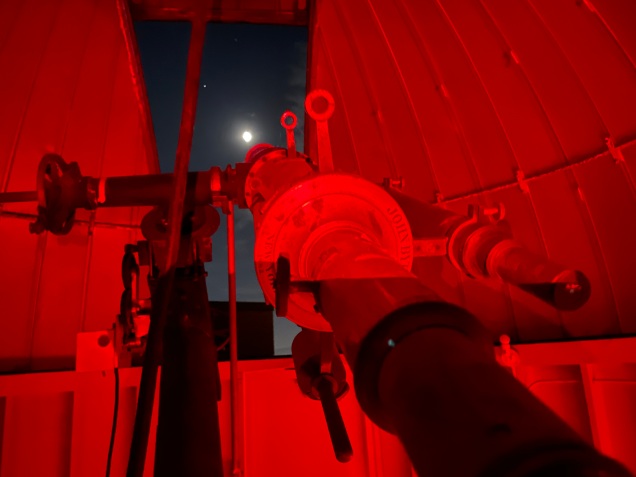Marietta College
Physics Department
Mills Hall
Marietta, OH 45750
Dr. Ann Bragg, Professor,
Director of the Anderson Hancock Planetarium
(740) 376-4589
Email: ann.bragg@marietta.edu

Astronomy courses employ the vintage telescope in Gurley Observatory located on the roof of Mills Hall. In addition to the main observatory, there is an observation platform, and a storage and laboratory room. Numerous small telescopes are available for individual student use. A 14-inch Meade LX200GPS Schmidt-Cassegrain telescope has been added to the instruments available.
“Marietta College comes by its study of the stars honestly and can trace its early beginnings to the nineteenth century when it established the William Chamberlain Gurley Observatory. Appointed director of the observatory, Gurley … shared his enthusiasm and love for astronomy with a good many of the College’s students causing a number of them to make the study of science their life’s work. The 6.25-inch refractor, originally purchased by Gurley to view the transit of Venus in December of 1882 remains an asset of the College and is now housed in the observatory atop the roof of Mills Hall. Marietta’s sharing of the stars with a wider audience has its roots with the Gurley Observatory as well. The first published photograph of the moon in an American periodical, (Scientific American), was taken from a glass plate made by Gurley using the 1882 John Byrne telescope.” — The Legacy Campaign / Anderson Hancock Planetarium
